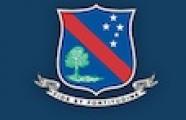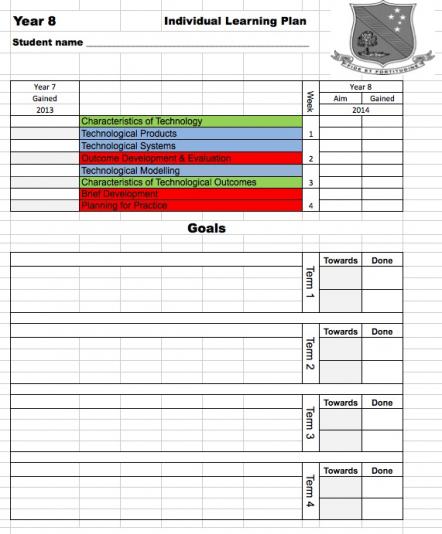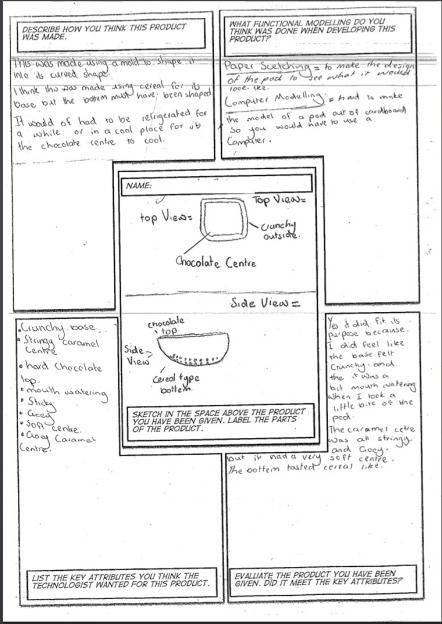Introducing shared planning and recording from year 7
Teaching inquiry
How can we plan for cohesion between technology learning programmes at the high school and at the technology centre?
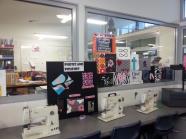
Introduction
At South Otago High School Christine Elder and Kathleen Hepburn found that working collaboratively across the technology faculty and the technology centre helped teachers:
- grow their understandings and confidence
- streamline work processes
- clarify expectations for students.
Background
South Otago High School is based in Balclutha and includes a technology centre that provides technology education within specialist classrooms to ten client schools.
Programmes at the high school had traditionally focused on technological practice and skill development, with each specialist area operating independently.
But Kathleen Hepburn, Head of Technology Faculty, had previous experience in planning collectively and wanted to establish this at the centre.
Technology teacher, Christine Elder, wanted to work with the high school technology faculty to ensure cohesion across their programmes.
Beginnings
At the high school, Kathleen had begun development meetings with the technology faculty. Each teacher was given an opportunity to explore a specific component and was asked to develop resources that could help the group. The initial focus was on year 9 programmes, with plans for a review of year 10 in the following year.
At the technology centre, Christine was incorporating a focus on all of the components across the year 7 and 8 programmes. Levels 1 and 2 were covered at year 7. The goal was for students to be at level 2 by the end of year 7. For year 8 students, the goal was to reach level 3. All of the strands were covered within each year.
Strategy
Kathleen and Christine could see the value of working with technology staff in both the high school and the technology centre to share their curriculum understandings and to develop a planned approach to curriculum implementation.
Working collectively, the technology centre and the high school have developed a revised plan for curriculum coverage in years 9 and 10.
Year 9
When students reach year 9, the expectation is that they are at level 2 of the curriculum and heading towards level 3. The aim is to have students achieving at level 4 by the end of year 9.
Students have four eight-week rotations in the following specialist areas – digital, materials - resistant, textiles, and processed outcomes - food. Two components are covered within each rotation – one from the technological practice strand and another from the knowledge strand or the nature strand.
For each of the two initial rotations, Kathleen and her teachers created and shared activities to develop understandings of the components, with adaptations for subject-specific requirements.
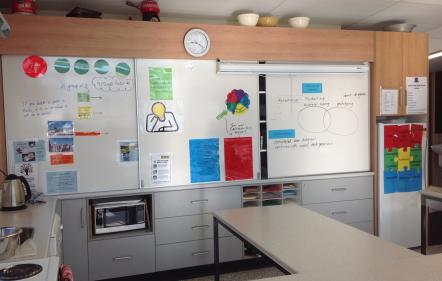
Teachers were concerned that if a component is the focus of teaching and learning at the beginning of the year, and is assessed at that time, then the levels of achievement students demonstrate might be lower than the levels they could achieve at later in the year. So they decided that while all rotations would include technological practice components and formative assessment, summative assessment would be carried out in the final rotation.
Student booklets
The staff could see that there was a need for clear and consistent records of teaching and learning and assessment. Students and teachers both required workbooks for each rotation that clearly showed the components, the curriculum level, and the associated indicators that they were being taught and assessed against.
Christine had developed student workbooks that clearly outlined the curriculum level and associated indicators that year 7 and 8 students would be covering in each of the rotations they participated in at the technology centre.
Kathleen and staff at the high school use student booklets. Assessment and progression to the next level are shown clearly at the bottom of the assessment page so that students can see where they are heading in terms of understandings.
Originally, Kathleen modelled the type of student booklet staff could develop. Teachers modified this for the specialist area they were working in.
To allow for ease of marking, the booklets have been redesigned for next year to separate the teaching and learning and formative assessment from the summative assessment area.
The teachers all contributed material to the booklets throughout the year, developing an updated version for the following year.
Assessment, tracking progress, and reporting
There was a clear need for a shared process for carrying out and recording curriculum-focused assessment. Students’ progress needed to be tracked and made available to students, teachers, parents, and the wider school community. A school-wide digital recording system was developed for trial the following year. The teachers are looking forward to having digital records of student progress.
Vocabulary
At the end of term 4, Christine carried out a vocabulary test on all students at the technology centre. This information will be used to inform the next steps for teaching and learning. It has also provided an opportunity for a conversation with the client schools on their technology curriculum implementation.
Terminology test, year 7 (Word 2007, 19 KB)
The end of year test on vocabulary is passed on to Kathleen to share with teachers in the high school. The test gives information on students with low levels of understanding of the vocabulary and also highlights very capable students.
In some of the student booklets used during the year, Christine recorded vocabulary specific to the context for the term on the front cover. She plans to do this again with all booklets next year because it makes the students more aware of the terms and context.
Prior learning
Christine has been trialling strategies for assessing how much students have retained from their prior learning at the beginning of the rotations. One of these strategies is to begin a rotation by asking students to analyse a technological product or technological system. The questions she has used have focused on specific vocabulary and understandings related to a component she expects them to be familiar with.
Prior learning, modelling (PDF, 54 KB)
Interviews with client schools
Christine has traditionally held interviews with the client schools at the beginning of the year but she is now trialling holding them at the end of the year. She had found that at the beginning of the year many of the teachers had only seen the students for two weeks and were not able to provide detailed information.
The interviews are also an opportunity to understand the technology projects and contexts at these schools. This will help Christine to provide continuity for students when they attend the technology centre.
Two schools have been interviewed so far using a series of focused questions. The information gathered at these interviews suggested there may be a limited focus on the technology curriculum at some schools. Christine plans to offer the client schools assistance with planning for learning in technology and with growing teachers’ technology curriculum knowledge.
Year 6, Interview questions for client schools (Word 2007, 32 KB)
Outcomes
Kathleen and Christine have seen a noticeable increase in teachers' and students' understandings.
Professional learning and development meetings with staff at the end of the year showed a significant growth in teacher confidence, with increased ability to contribute to conversations around curriculum concepts. Teachers will now consult with each other and reflect on their teaching strategies for the various indicators and components.
Teachers can see work processes being streamlined and the efficiencies gained from this.
Students now have clear outlines of the expected achievements. When asked, they have been very positive about the clarity of expectations.

